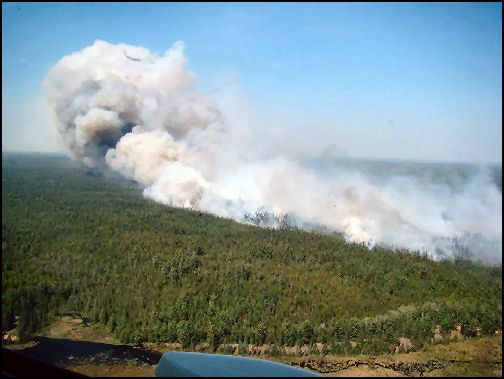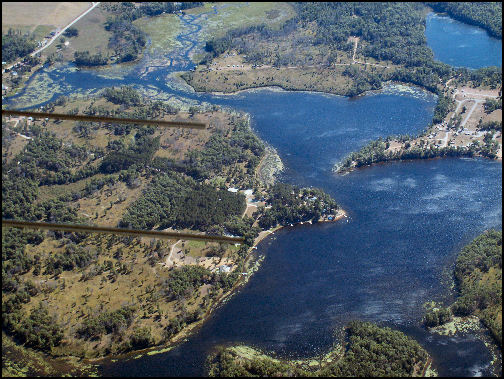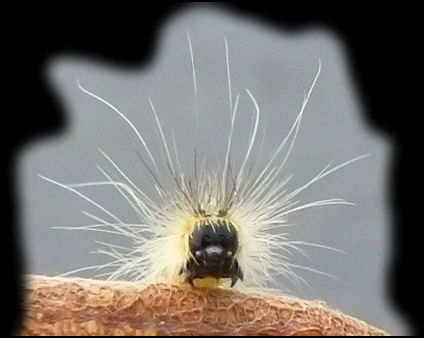| Introduction | Forest Types | |
| Forest Characteristics | Management | |
| Forest Contributions | Special Considerations | |
| The Forest Plan | Assistance |
![]()
FOREST MANAGEMENT GUIDELINES FOR MICHIGAN |
| Introduction | Forest Types | |
| Forest Characteristics | Management | |
| Forest Contributions | Special Considerations | |
| The Forest Plan | Assistance |
![]()
FOREST MANAGEMENT GUIDELINES FOR MICHIGAN |
Special Management Considerations
[Back to main page for special considerations]
Forest Protection
Overall, Michigan's forests are healthy and productive. However, forests experience periods of stress and decline. Stress is caused by factors such as fire, drought, storms, late spring frosts, diseases, insects, and the advanced age of some especially shade intolerant forest types. These forests are most commonly even-aged with trees reaching maturity about the same time. Shade intolerant trees like aspen, northern pin oak, balsam fir, and jack pine do not live as long as shade tolerant trees and are more easily stressed once they reach maturity. Such trees most often mature around 50-70 years of age. Site conditions such as soil texture and moisture availability affect tree vigor and the tree’s response to biotic limiting factors (e.g. periodic defoliation). Declines, mortality, and/or fire hazard are an integral part of the ecology of Michigan's shade intolerant, forest types. Declines caused by periodic stresses, especially periods of drought, play a significant role in shaping Michigan's forests. Recognizing, understanding, and working with these, and other limiting natural processes and events, is an integral part of forest resource management.
Wildfire is a major concern in a forested landscape. Spring and fall are usually the periods of highest hazard due to the cured leaves, grass, and other vegetation that have accumulated from the previous growing season. Summer droughts can also be a time when serious wildfires may threaten the forest resource and interspersed homes. Increased numbers of people living in wildlands, along with diverse and increasing recreational use in the forest, have increased the risk of wildfire. Things to consider that could reduce the hazard of wildfire are limiting access to the area, establishing fuel breaks, reducing fuel (such as logging slash), and making users aware of fire danger.
The use of prescribed burning as a silvicultural treatment is a valuable tool in the management and regeneration of several tree species, particularly jack and red pine. Wildlife habitat, endangered species, and rare ecosystems may also be enhanced by the use of prescribed burning. There are definite hazards to prescribed burning. Prevention of escape requires special planning and preparation by experienced personnel.
More homes and housing developments in forested areas have added a new dimension to fire protection and the use of fire as a management tool. The people associated with this development bring with them the increased risk of wildfire ignitions. In addition, their structures now require additional suppression forces once a wildfire starts. Homeowners can reduce the risk of wildfire through the use of Firewise landscaping techniques. Information on the Firewise program is available on the Internet or from Michigan State University (MSU) Extension. Communities may want to consider developing Community Wildfire Protection Plans to reduce local risks. This is a collaborative process to reduce the risk of fire on neighboring public and private land. Contact the adjacent state or Federal land managing agency, which in Michigan could be the Bureau of Indian Affairs, USDA Fish and Wildlife Service, National Park Service, USDA Forest Service, or the Michigan DNR for additional information.
Forest Health
Tree health and forest health are different things. A healthy tree is vigorous and disease free but not all trees in a forest should be healthy to have a healthy forest. A healthy forest supports many different life forms, some of which require components of dead, dying, and decaying trees.
Definitions of forest health closely reflect the values and beliefs of the observer. To one person, a vigorously growing forest producing a renewable timber resource is ideal. To another, the presence of specific habitats for wildlife species is paramount. Yet, another person would say that "letting nature take its course" is the ultimate in forest health.
A forest resource manager must balance resource demands based on a wide array of forest values. This requires an understanding and appreciation of all values, ability to compromise, a comprehensive inventory of the forest resource, and knowledge of limiting factors. A limiting factor is defined as a biotic or abiotic agent that has a negative influence on forest health and vigor of trees. Among the many limiting factors that affect the diversity, productivity, and vitality of Michigan’s forests are native and non-native insects and diseases, invasive plant species, and deer browsing; as well as abiotic stressors such as prolonged drought and poor soils. There are complex interactions within and between both biotic and abiotic limiting factors.
 The most common biotic limiting factors are native insects and diseases which are components of natural ecological processes that periodically kill weakened trees. However, due to an expanding global economy, there is an ever-present threat of introducing new invasive plants, diseases, insects, and other animals. Non-native species have not evolved with and are not integral parts of native ecosystems. Consequently, many have no native biological controls to keep their populations in-check within the ecosystems that they invade. Non-native pests can cause new, and sometimes devastating, effects that disrupt natural ecological functions and processes and have major ecological consequences on the composition and health of native forest communities. Well known examples of invasive species include Dutch elm disease and chestnut blight which greatly reduced the number of American elm and American chestnut trees, respectively. More recently introduced invasive species include the emerald ash borer, beech bark disease, oak wilt, and the hemlock woolly adelgid.
The most common biotic limiting factors are native insects and diseases which are components of natural ecological processes that periodically kill weakened trees. However, due to an expanding global economy, there is an ever-present threat of introducing new invasive plants, diseases, insects, and other animals. Non-native species have not evolved with and are not integral parts of native ecosystems. Consequently, many have no native biological controls to keep their populations in-check within the ecosystems that they invade. Non-native pests can cause new, and sometimes devastating, effects that disrupt natural ecological functions and processes and have major ecological consequences on the composition and health of native forest communities. Well known examples of invasive species include Dutch elm disease and chestnut blight which greatly reduced the number of American elm and American chestnut trees, respectively. More recently introduced invasive species include the emerald ash borer, beech bark disease, oak wilt, and the hemlock woolly adelgid.
Once an exotic agent like the emerald ash borer or oak wilt begins killing trees, they can be moved to new, sometimes very distant areas in firewood, nursery stock, or other wood products produced from infested trees. The responsible use and movement of firewood is currently the focus of public education and outreach. State and federal regulations are one way to reduce the introduction and spread of exotic pests in our forests.
Forest health information is available from forest resource managers and forest health specialists with the Michigan Department of Natural Resources & Environment and MSU Extension.
|

This website is maintained by Bill Cook, Michigan State University Extension
Forest in the Upper Peninsula. Comments, questions,
and suggestions are gratefully accepted.
Last update of this page was 9 January, 2014
This site is hosted by School of Forest Resources and Environmental Science at Michigan Technological University.